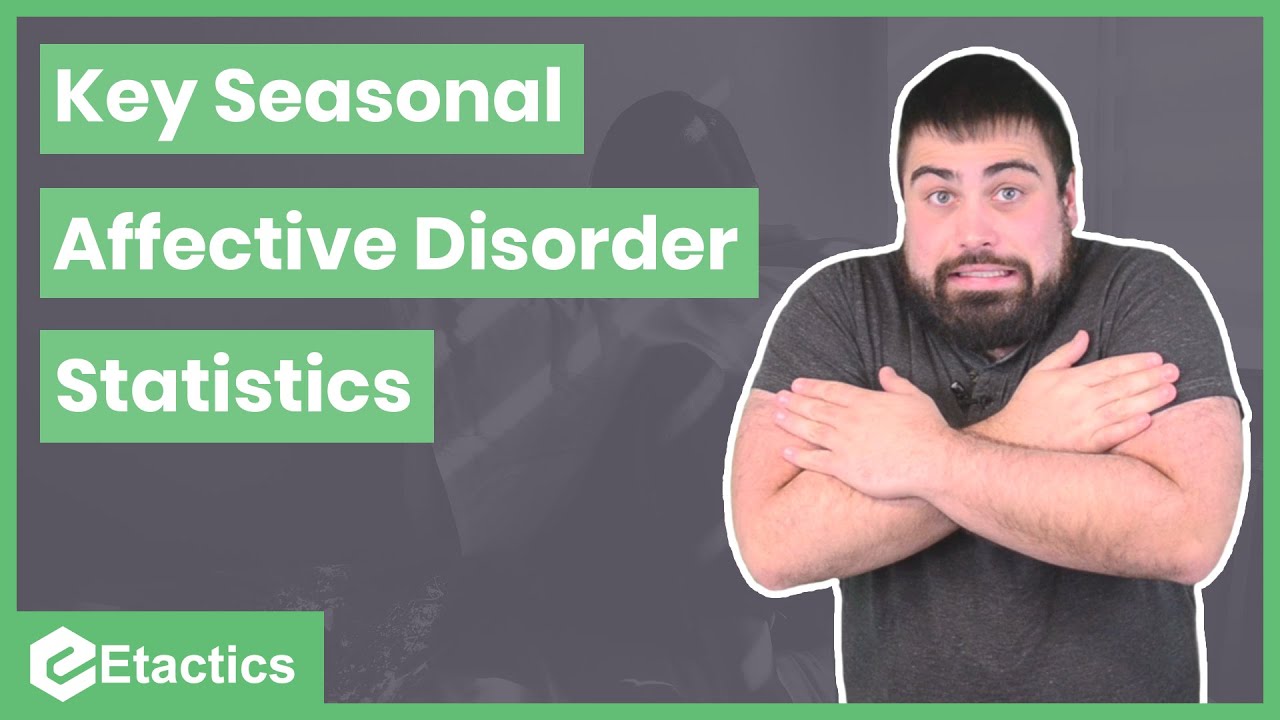Most states also moved their clocks back with the end of daylight savings time, so there’s another hour of darkness.
While it’s a bummer that we have less time to be outside, this has a real effect on our mental health. It isn’t a coincidence that some of us already feel the winter blues. There’s actually a reason for this, and it’s called seasonal affective disorder (also known as SAD).
This is a form of depression that occurs with the change of seasons. Yes, when winter approaches, it is possible to experience real symptoms of depression.
LINKS:
____________________________________________
https://etactics.com/blog/seasonal-affective-disorder-statistics
____________________________________________
Of course, I need to start with a disclaimer stating that I’m not a doctor. If you’re experiencing depression-like symptoms, reach out to your physician or therapist. During this video, I’ll be going over statistics gathered from legitimate sources about Seasonal Affective Disorder.
In order to be diagnosed with seasonal affective disorder, also known as SAD, you need to experience seasonal depression for at least two years.
The symptoms of depression need to occur much more frequently with the change of seasons. While it’s possible to experience the condition in the summer, it’s most common in the fall and winter.
One of the main reasons for winter depression is lack of sunlight.
The sun influences the production of different hormones, such as melatonin and serotonin. With a lack of sunlight, our body produces more melatonin. This hormone influences us to sleep, so we feel more exhausted and tired in the winter as it’s dark more often. Less sunlight also causes a drop in serotonin, a chemical that affects mood.
These lower levels also trigger depression.
Around 10 million Americans have seasonal affective disorder, and another 10 to 20% have milder forms. Certain people are more susceptible to having this condition.
Geography is one factor. Some states experience less than five hours of sunlight per day. The further you get from the equator, the less daylight there is.
Because of this, people further away are more likely to experience seasonal affective disorder. In fact, the prevalence is only 1.5% of the Florida population which is also called the Sunshine State. While 10% of the New Hampshire population experience the ailment.
Gender, age, and family history also play a role in prevalence. Women are four times more likely than men to have the disorder, and it’s most common between ages 18 and 30. Between 13 and 17% of people who develop the condition have an immediate family member with the disorder.
There are ways people can manage and avoid seasonal affective disorder, despite the susceptibilities. People with the condition sleep about two hours more in the winter than in the summer because of the change in melatonin levels. But altering your sleep schedule has negative effects. Sleeping too much can make you feel more fatigued, and being more inactive is worse for depression.
During the winter, people are already more inactive because it’s colder and there’s less daylight to get outside. It’s also common for people with seasonal affective disorder to eat more carbohydrates, which leads to weight gain.
All of these things combined increases symptoms of seasonal depression. Getting enough sleep, the right nutrients, and enough exercise helps ward off symptoms. It’s possible to manage and avoid it with 30 to 60 minutes of exercise each day.
This also reduces the risk of major depression by 26%.
Exercising outside specifically can help even more. Only 20 minutes of light exposure is good for managing the disorder, so you should try to get outside if the weather isn’t too cold. This also helps you get more Vitamin D, an important nutrient from sun exposure which boosts mood.
A lot of people already have deficiencies of Vitamin D, so it’s important to maintain this nutrient even in the winter when you get less sunlight.
If it isn’t possible for you to get outside during the daylight, there are still options for you. Light therapy is the most common treatment for seasonal affective disorder. This works by sitting near a device called a light therapy box, which mimics natural outdoor light. It can affect brain chemicals linked to mood and sleep to ease your symptoms.
As winter approaches, some of us might already be anticipating a phase of winter blues, especially if we’ve dealt with it in the past. If you experience symptoms of depression frequently with the change in seasons, it might actually be from this mental health condition.
► Reach out to Etactics @ https://www.etactics.com
►Subscribe: https://rb.gy/pso1fq to learn more tips and tricks in healthcare, health IT, and cybersecurity.
►Find us on LinkedIn: https://www.linkedin.com/company/etactics-inc
►Find us on Facebook: https://www.facebook.com/etacticsinc/
#SAD #SeasonalAffectiveDisorder
source
